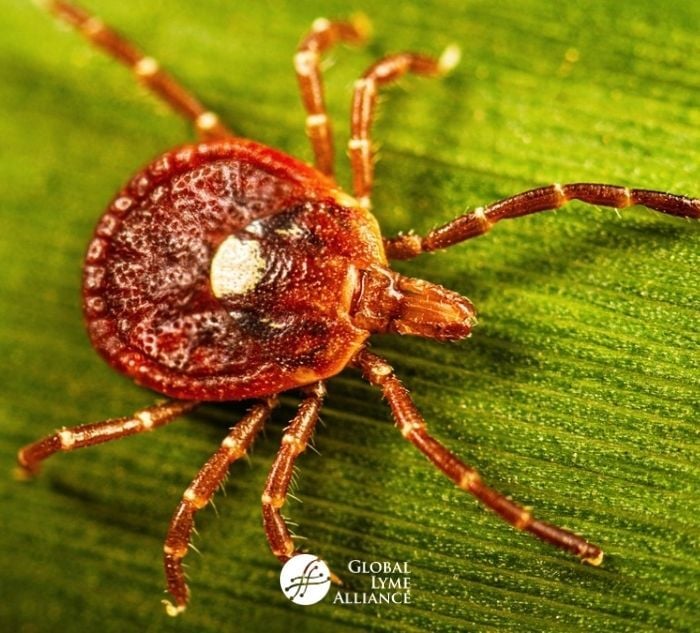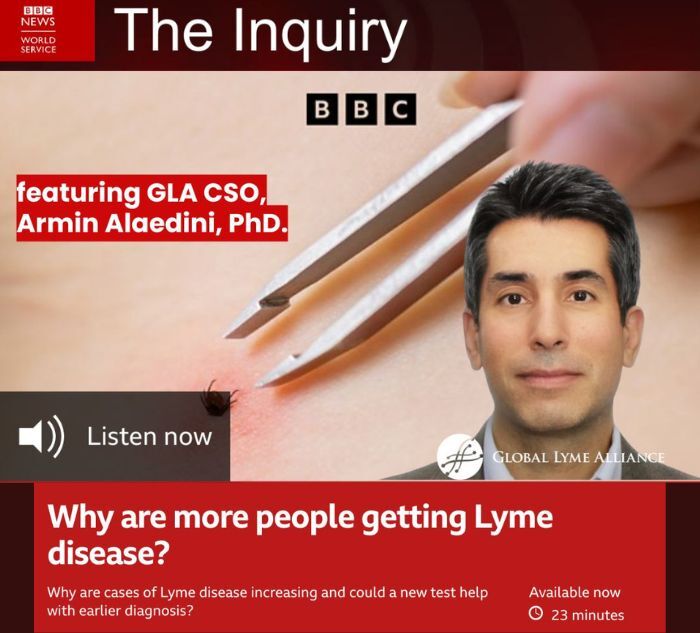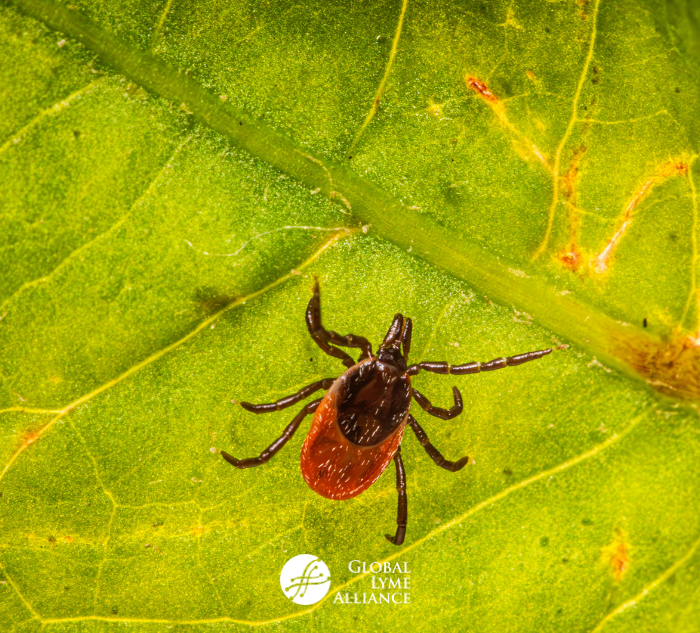
Jennifer Crystal reflects on her journey with Lyme disease, sharing her progress, treatments, and what has and hasn't worked for her over the years.
Many of you have been following this blog for years. You’ve heard me muse on various aspects of living with Lyme disease, babesiosis, ehrlichiosis, bartonella, and chronic active Epstein-Barr virus. You’ve read posts about physical and neurological symptoms of tick-borne disease. You’ve let me know that you’ve felt seen and heard in my words, and you’ve encouraged me to keep sharing, both through the blogs and my recent memoir, One Tick Stopped the Clock.
After 12 years of blog posts about a journey that began with an unknown tick bite in 1997 and took me from bedridden to thriving and everywhere in between, you may be wondering, how I am doing now? What’s worked for me? What hasn’t? Am I 100% better, and if not, what do I still hope will improve?
How am I doing?
I am 85-90% better. On a day-to-day basis, I live my life and don’t feel sick. With the exception of early afternoon, I no longer think about how tired I am when I’m doing something. When I do get fatigued, it’s what I call “normal tired” versus “sick tired.” I exercise frequently and at much higher levels than I could have even a few years ago (for example, I can ski a couple mornings in a row without problem).
Having once had such intense brain fog and joint pain that I could barely read or type a paragraph, I now work three jobs: writing for GLA, teaching the Writing to Heal Program at Grub Street Creative Writing Center, and writing for Harvard Health Publishing. I work remotely so I can manage my hours around my needs. I’m also touring with One Tick Stopped the Clock. Sometimes, at high stress points or times of too much reading, I have minor flares of neurological symptoms, but I’m able to quiet these down relatively quickly by backing off my schedule. I pace my workday carefully, taking screen breaks and making sure I get outside or do something active.
I live completely independently and have a rich social life, whereas I was once bedridden at my parents’. I can drive myself about three hours before getting fatigued, and have taken short, direct plane trips from Boston to places like Florida and Mexico. I don’t drink alcohol. While I sometimes wish I could have a glass of wine with dinner, I know the consequences are not worth the benefit of my health.
I maintain a strict sleep schedule, managed with sleep medication. My hallucinogenic nightmares have tamped down but can still flare sometimes. I go to bed around 10 every night and wake by 7:30, without exception. I also have to nap every afternoon. If I don’t, brain fog and fatigue ruin the rest of the day, and sometimes the following day, too. That hour or two of sleep allows me to get back up and keep going.
Because I don’t live in a country where siesta is part of everyone’s day, it can be a nuisance to have to cut activities or work short for this daily pause. I’d like to get to a point where I don’t need the nap, at least not every day, or to a point where I can just take a brief rest later in the day rather than having to always sleep in the early afternoon. The need for a nap, plus some residual neurological symptoms, are the extra 10-15% left.
What maintains my health?
Feeling 100% will not mean being medication-free. It will mean feeling my best while maintaining my health with allopathic and naturopathic treatment for tick-borne disease; medication for sleep disturbances, anxiety, depression, and hypothyroidism; vitamins and supplements; adjunct therapies; the “Lyme disease diet”; exercise; balance and pacing; acceptance and reframing of “restrictions”; fun; and emotional support. It will also not mean I’m cured. My tick-borne diseases will continue to be managed in remission but could flare.
What’s helped most recently?
85-90% is a relatively new number for me. For many years, I was at about 70-75%, doing very well but still needing intense anti-malarial medication every six months for babesiosis flares. I wasn’t able to exercise to the degree I can now. Here are two things that helped me level up:
- Monolaurin: This supplement made from lauric acid has anti-viral and anti-bacterial properties. It has particularly helped with my Epstein-Barr and babesiosis; I haven’t needed anti-malarial medication since starting it. It’s taken as very small pellets and I’ve had to increase them very, very slowly to avoid Herxheimer reactions. Monolaurin was recommended to me by my Lyme Literate Medical Doctor (LLMD) and I’ve taken it under their supervision. Talk with your own LLMD to see if this supplement would be right for your own protocol.
- Iron polysaccharide: After having COVID-19 in 2020, I noticed an uptick in air hunger, lightheadedness, and post-exertional malaise. I thought my babesiosis might be flaring, but bloodwork showed that my ferritin levels (iron stores) were low. I now take iron polysaccharide (easier on the stomach than regular iron supplements), which has brought the ferritin levels up and improved the symptoms. Now, when those symptoms flare, my LLMD and I know to consider both babesiosis and low ferritin. If you experience these symptoms yourself, you might have your LLMD check your iron levels. As Lyme patients, we tend to think all symptoms are tick-borne illness related, but we have to keep the big picture—other health issues—in mind.
What hasn’t helped?
I want to preface this section by reminding patients that there is no set protocol for treating tick-borne illness, especially in its chronic form. Protocols vary based on personal factors such as length of time between diagnosis and treatment, co-infections, immune response, and co-morbidities, so what specifically worked for me at any given time might not work for you. It might not even work again for me at a different time, since my own symptoms and responses are always shifting.
While other people might have different experiences, the following have not worked well for me:
- Deep massage: For me, this has only seemed to encourage spirochete movement and made me feel worse, not better.
- Intravenous vitamin C: This treatment made me very sick to my stomach and extremely dehydrated; I was in bed for days.
- Regular iron supplements: These can cause constipation.
- Heavy detox: For me, I have to go low and slow with everything, whether that’s adding a medication, taking one out, or detoxing. Big shocks to my system have big negative effects.
- Pushing beyond my limits: Going beyond my neurological or physical capabilities always makes me feel worse instead of better. Post-exertional malaise, both physical and mental, is very real for Lyme patients.
- Making more than one change at a time: Well-meaning doctors who just want you to get better may throw many different ideas at you at once. I’ve found that if I change more than one thing (medication, supplement, food, etc.) at a time, I can’t tell what’s causing whatever effect I feel, good or bad.
- The word “should”: This word often comes from someone other than yourself, or when it does come from yourself, it’s based on some internalized message of what you think you’re “supposed” to be doing. What you should be doing is taking care of yourself in whatever way you need. If you’re feeling pressured by yourself or someone else to do something you “should,” that usually means you shouldn’t. (For more on this topic, see my blog post “Can’t Versus Shouldn’t”.)
- Eliminating chocolate: For a long time, I followed the Lyme disease diet very, very strictly, not consuming an ounce of sugar. That meant eliminating my favorite food. Finally, I told my doctor I was not going to get better if I couldn’t have chocolate. He laughed and asked what was stopping me. He reminded me two important things: 1) Dark chocolate has very low sugar, so eating small amounts won’t destroy your microbiome (and, dark chocolate actually has great health benefits, too!) and 2) It’s important to see the forest for the trees—that is, to not get so hyper-focused on following every single rule at every moment, but generally doing what’s recommended, within reason, to maintain your health. It’s all about balance!
***

Jennifer Crystal
Writer
Opinions expressed by contributors are their own. Jennifer Crystal is a writer and educator in Boston. Her work has appeared in local and national publications including Harvard Health Publishing and The Boston Globe. As a GLA columnist for over six years, her work on GLA.org has received mention in publications such as The New Yorker, weatherchannel.com, CQ Researcher, and ProHealth.com. Jennifer is a patient advocate who has dealt with chronic illness, including Lyme and other tick-borne infections. Her memoir, One Tick Stopped the Clock, was published by Legacy Book Press in 2024. Ten percent of proceeds from the book will go to Global Lyme Alliance. Contact her via email below.







